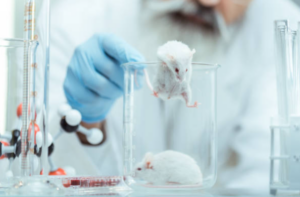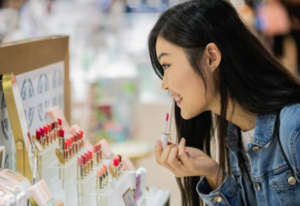Navigating Changing Regulations

In the dynamic world of beauty and cosmetics, the pursuit of cruelty-free products has gained immense momentum, fueled by the growing awareness and ethical considerations of consumers worldwide. One significant challenge in this journey has been the regulatory landscape in China, a market known for its rigorous animal testing requirements. In this extensive exploration, we delve into the evolving regulations surrounding cruelty-free cosmetics in China, examining the challenges, recent developments, and the positive strides made by brands committed to ethical beauty practices.
China has long been a lucrative market for beauty brands seeking global expansion. However, the country’s regulations have historically mandated animal testing for cosmetics, creating a dilemma for companies committed to cruelty-free practices. To sell in mainland China, brands were required to submit their products for testing on animals, undermining their cruelty-free status.
The Regulatory Shift
In the realm of cruelty-free cosmetics, China has historically been associated with stringent animal testing requirements for beauty products, creating a challenging landscape for brands committed to ethical practices. However, a notable shift in regulations has occurred in recent years, reflecting a growing global awareness of the ethical implications of animal testing.
- Historical Context:
China’s historical requirement for animal testing stemmed from concerns about ensuring the safety of cosmetic products. The country mandated animal testing as a means of assessing the potential risks and adverse effects of cosmetics before they could be sold in the Chinese market. This practice, while aimed at safeguarding consumer well-being, clashed with the rising global demand for cruelty-free products.
- 2014: The Turning Point:
The pivotal moment in China’s regulatory landscape came in 2014 when authorities announced that domestically-produced non-special use cosmetics would no longer be required to undergo animal testing. This marked a significant departure from the previous stance, signaling a recognition of alternative testing methods and a willingness to align with international standards.
- 2020: Expansion of Exemptions:
Building on the 2014 changes, further developments occurred in 2020 with the introduction of the Cosmetic Supervision and Administration Regulation (CSAR). This regulation expanded the scope of exemptions from animal testing, particularly for certain imported cosmetics. The conditions under which imported ordinary cosmetics could bypass animal testing were outlined, creating a pathway for brands committed to cruelty-free practices to enter the Chinese market.

The Criteria for Exemption
China’s regulatory framework for the exemption of animal testing has set forth specific criteria that cosmetics brands must meet to be eligible for non-animal testing. Understanding these criteria provides insight into the complexities brands face when navigating the regulatory landscape.
- Non-Special Use Cosmetics:The exemption applies exclusively to ordinary cosmetics and excludes special use cosmetics. Special use cosmetics encompass products such as hair dyes, sunscreens, and anti-hair loss products, which still require mandatory animal testing. The focus on non-special use cosmetics allows for a more gradual introduction of cruelty-free practices into the Chinese market.
- Product Formulation and Ingredient Requirements:Brands seeking exemption must provide comprehensive information about the formulation and ingredients of their cosmetics. This includes detailed documentation demonstrating that the product adheres to stipulated safety standards. The emphasis on transparency in product formulation ensures that the exempted cosmetics meet safety criteria without the need for animal testing.
- Evidence of Compliance with Overseas Standards:A crucial condition for exemption is the submission of evidence proving compliance with safety standards. Brands need to demonstrate that their cosmetics meet the safety standards of their home country or another internationally accepted standard. This requirement emphasizes the global harmonization of safety standards and acknowledges the validity of non-animal testing methods.
- Proof of Non-Animal Testing:To qualify for exemption, brands must provide evidence that their products have not undergone animal testing for a specified duration preceding the application. This timeframe, set at one year, signifies a commitment to cruelty-free practices during the product development phase. It ensures that brands actively transition away from animal testing in favor of alternative, humane testing methods.
While these conditions represent a significant step forward, they also present challenges for brands seeking to navigate the complexities of compliance.

Brand Commitments and Global Impact
Several international beauty brands, committed to cruelty-free practices, faced a dilemma when considering entry into the Chinese market. The decision to sell in China often meant compromising their cruelty-free status, leading to public relations challenges and a potential loss of consumer trust.
However, some brands chose to uphold their commitment to cruelty-free practices, opting to remain out of the Chinese market until more favorable regulations aligned with their ethical standards. This stance reflects the increasing importance consumers place on brand transparency and ethical considerations, influencing industry norms on a global scale.
The movement towards cruelty-free beauty has gained significant momentum, thanks in part to the efforts of global campaigns advocating for change. These initiatives, led by organizations and activists dedicated to ending animal testing in the cosmetics industry, have played a crucial role in shaping public opinion, influencing policies, and encouraging brands to adopt cruelty-free practices.
1. The #BeCrueltyFree Campaign:
One of the prominent global campaigns leading the charge against animal testing in the cosmetics industry is the #BeCrueltyFree campaign. This campaign is spearheaded by Humane Society International (HSI) and Humane Society of the United States (HSUS), working in collaboration with other animal protection groups worldwide. The primary goal of #BeCrueltyFree is to advocate for legislative changes that ban cosmetic animal testing and the sale of newly animal-tested cosmetics.
- Legislative Advocacy: #BeCrueltyFree actively engages with governments, policymakers, and regulatory bodies to promote the adoption of cruelty-free practices. The campaign focuses on supporting the introduction and implementation of laws and regulations that prohibit animal testing for cosmetics.
- Global Reach: With a presence in multiple countries, #BeCrueltyFree operates on a global scale, recognizing the need for coordinated efforts to address the challenges associated with ending animal testing worldwide. By collaborating with local organizations and governments, the campaign aims to create a unified, global approach to cruelty-free beauty.
- Public Awareness: #BeCrueltyFree places a strong emphasis on raising public awareness about the ethical implications of animal testing in the cosmetics industry. Through social media, educational campaigns, and public events, the initiative informs consumers about cruelty-free alternatives and encourages them to make informed choices when purchasing beauty products.
2. Cruelty Free International and The Leaping Bunny Program:
Cruelty Free International is an organization dedicated to ending animal testing globally. One of its flagship programs is The Leaping Bunny Program, which certifies brands as cruelty-free after a rigorous verification process.
- Certification Process: The Leaping Bunny certification is one of the most recognized symbols of cruelty-free beauty. Brands seeking certification undergo a thorough examination of their supply chain to ensure that no animal testing occurs at any stage of product development. This certification provides consumers with a reliable and internationally recognized indicator of cruelty-free status.
- Collaboration with Brands: Cruelty Free International actively collaborates with beauty brands to encourage them to adopt cruelty-free practices. By providing guidance, support, and recognition through the Leaping Bunny Program, the organization incentivizes brands to make ethical choices in their product development.
- Advocacy for Regulatory Changes: In addition to certifying cruelty-free brands, Cruelty Free International advocates for legislative changes to ban cosmetic animal testing. The organization engages with governments, regulatory bodies, and industry stakeholders to push for comprehensive bans on animal testing for cosmetics.
3. The Humane Cosmetics Act (HCA) in the United States:
The Humane Cosmetics Act (HCA) is a legislative initiative in the United States aimed at prohibiting cosmetic animal testing and the sale of cosmetics tested on animals. This proposed federal law, if enacted, would align the U.S. with countries and regions that have already implemented or are in the process of implementing similar bans.
- Legislation Highlights: The HCA seeks to end cosmetic animal testing for both ingredients and finished products. It also aims to prohibit the sale of cosmetics in the U.S. that have been tested on animals, reinforcing the commitment to cruelty-free beauty.
- Support from Advocacy Groups: Advocacy groups, including The Humane Society of the United States, actively support the Humane Cosmetics Act. These groups mobilize public support, engage with policymakers, and contribute to the broader global movement against cosmetic animal testing.
- Industry Collaboration: The proposed legislation encourages collaboration between the cosmetics industry, regulatory bodies, and animal welfare organizations to facilitate the development and adoption of alternative testing methods.
4. EU Bans on Animal Testing:
The European Union (EU) has been a pioneer in advocating for cruelty-free practices in the cosmetics industry. The EU enacted a ban on animal testing for cosmetics in 2009, and this ban was later extended to cover the sale of cosmetics tested on animals, regardless of where the testing occurred.
- Historical Significance: The EU’s decision to ban both animal testing and the sale of animal-tested cosmetics set a powerful precedent and influenced global discussions on cruelty-free beauty. The success of the EU model demonstrated that a comprehensive ban is not only feasible but also contributes to the growth of cruelty-free markets.
- Impact on Global Markets: The EU’s commitment to cruelty-free practices has influenced the behavior of international brands. Many brands, even those based outside the EU, have adjusted their practices to comply with EU regulations, reflecting the global impact of regional bans on animal testing.

China’s Progress and Remaining Challenges
While China has made strides in relaxing its animal testing requirements, challenges remain. The exemption criteria, while a positive step, pose hurdles for brands seeking entry into the market. The bureaucratic process, coupled with uncertainties about enforcement and interpretation, can be daunting for companies aiming to maintain their cruelty-free status.
Additionally, the special use cosmetics category, including products like sunscreens and hair dyes, still requires mandatory animal testing. This limitation continues to be a roadblock for brands committed to avoiding all forms of animal testing in their product development.
China’s regulatory framework is still evolving, and industry stakeholders are actively engaging with authorities to further refine and improve the current system. The collaboration between government bodies, industry players, and advocacy groups is crucial for achieving a balance between consumer safety, business interests, and ethical considerations.
Brand Success Stories:
In navigating the complexities of China’s regulatory landscape, several beauty brands have found innovative solutions to maintain their cruelty-free status while entering the Chinese market:
- L’Oreal: L’Oreal has been proactive in collaborating with Chinese authorities to promote alternatives to animal testing. The company has invested in developing and promoting non-animal testing methods, contributing to the advancement of cruelty-free practices in the industry.
- NARS: NARS, a cosmetics brand under the Shiseido Group, successfully entered the Chinese market while maintaining its cruelty-free status. The brand strategically focused on selling products that fell within the exemption criteria, allowing it to navigate the regulatory landscape without compromising its ethical principles.
- The Body Shop: Known for its long-standing commitment to cruelty-free practices, The Body Shop has maintained its global cruelty-free status while strategically selecting products that meet China’s exemption criteria. The brand’s transparency and commitment to ethical beauty have resonated with consumers worldwide.
An essential aspect of the transition towards cruelty-free beauty in China involves educating consumers about the importance of making ethical choices. As awareness grows, consumers become powerful advocates for change, influencing market trends and encouraging brands to adopt cruelty-free practices.
The evolving landscape of cruelty-free cosmetics in China reflects a delicate balance between consumer demands, business interests, and regulatory considerations. As global awareness about ethical beauty practices continues to rise, the industry is likely to witness further advancements in regulations and an increased adoption of cruelty-free practices by beauty brands.
For brands committed to navigating the complexities of the Chinese market, strategic planning, collaboration with regulatory bodies, and a steadfast commitment to cruelty-free principles will be essential. As the beauty industry collectively moves towards a more compassionate and sustainable future, the fusion of technology and ethical considerations will play a pivotal role in shaping the global landscape of cruelty-free cosmetics.




